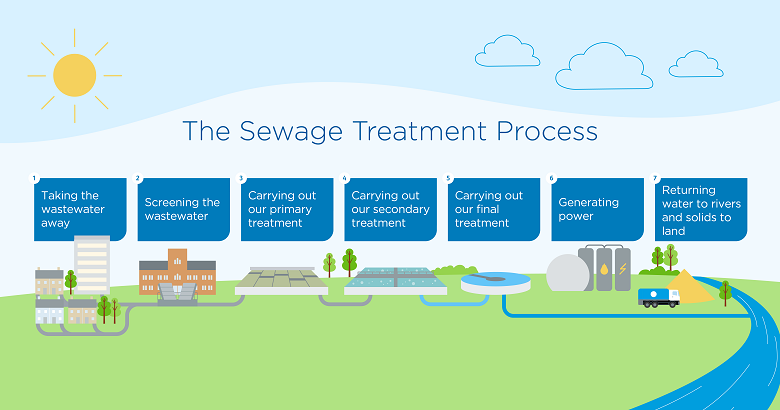Necessary Steps in Community Waste Water Treatment Plants
Strategic Approaches to Enhance Waste Water Treatment Effectiveness and Reduce Environmental Influence
In the world of waste water therapy, the mission for enhanced effectiveness and minimized environmental impact is a perpetual challenge that demands calculated services. The integration of innovative therapy technologies, energy-efficient processes, resource recovery techniques, enhanced nutrient elimination techniques, and wise monitoring and control systems represents a complex framework for attending to these pushing issues.
Advanced Therapy Technologies
Sophisticated membrane layer purification systems have actually transformed innovative wastewater treatment processes, substantially enhancing the elimination of pollutants. These innovative systems work by forcing water through a semi-permeable membrane layer, effectively separating impurities from the water stream. The membrane's microscopic pores trap contaminants such as microorganisms, infections, and suspended solids, allowing just detoxified water to go through. This modern technology has shown to be very effective in getting rid of a broad variety of impurities, consisting of drugs, heavy steels, and organic compounds, which are commonly testing to get rid of through typical therapy approaches.
Moreover, membrane layer purification systems use various advantages over standard treatment approaches. In addition, these systems are very flexible and can be quickly integrated into existing therapy plants or made use of as standalone units for decentralized applications.
Energy-Efficient Procedures
The assimilation of energy-efficient procedures in wastewater treatment systems is essential for enhancing resource utilization and decreasing functional expenses. By carrying out energy-efficient modern technologies, therapy plants can considerably lower their carbon impact and general environmental effect. One vital method to improving energy performance in wastewater treatment is the utilization of innovative oygenation systems, such as fine bubble diffusers or surface aerators, which can boost oxygen transfer efficiency and decrease power usage. In addition, including energy healing systems, like anaerobic food digestion for biogas production or utilizing excess heat for thermal procedures, can assist offset energy requirements and advertise sustainability.
In addition, maximizing procedure control and automation via using advanced sensors and keeping an eye on systems can boost overall power performance by readjusting operations in real-time based on actual demand and problems. Implementing power audits and regularly keeping track of power performance indicators are vital practices to recognize locations for enhancement and track energy-saving efforts efficiently. In general, the fostering of energy-efficient processes in wastewater treatment not only profits the environment but also adds to lasting cost savings and operational sustainability.
Source Recuperation Strategies
With a concentrate on enhancing resource use and sustainability in wastewater therapy systems, the implementation of source healing strategies becomes a pivotal facet in boosting operational efficiency. Source recovery approaches in wastewater treatment entail the recognition and extraction of beneficial resources from the waste stream, thus transforming what was when thought about waste right into an important property. By carrying out source recuperation techniques such as nutrient elimination and recuperation, energy generation from natural issue, and the manufacturing of multiple-use water, wastewater therapy plants can minimize environmental influence while maximizing effectiveness.

Enhanced Nutrient Removal Methods
Applying advanced nutrient elimination methods is crucial for enhancing the performance of wastewater treatment systems. One of the key next strategies used for improved nutrient elimination is the process of organic nutrient removal (BNR), which includes the removal of nitrogen and phosphorus through biological processes.

In addition to BNR, advanced therapy methods such as membrane layer bioreactors (MBRs) and constructed marshes can additionally be employed to improve nutrient elimination performance. MBRs use membrane layers to attain top quality effluent standards by effectively getting rid of nutrients and suspended solids. Built wetlands mimic natural wetland processes to remove nutrients through plant uptake, microbial activity, and sedimentation. By including these sophisticated nutrient elimination methods right into wastewater therapy sectors, districts and systems can successfully reduce nutrient contamination and protect the atmosphere.
Smart Tracking and Control Solution
Making use of sophisticated technology, the integration of clever tracking and control systems transforms the operational performance of wastewater treatment facilities. These systems integrate advanced sensors and data analytics to continuously check essential specifications such as pH levels, turbidity, dissolved oxygen, and flow rates in real-time. By gathering and examining this information, drivers can gain beneficial understandings right into the efficiency of the therapy processes, allowing aggressive modifications to optimize therapy efficiency.
Smart monitoring and control systems additionally support remote monitoring capacities, allowing operators to gain access to real-time information and control features from off-site locations. This remote accessibility boosts functional flexibility and responsiveness, enabling speedy interventions in instance of system breakdowns or changes in influent quality. In addition, the anticipating maintenance capacities of these systems help stop devices failures and minimize downtime, ultimately boosting the total reliability of wastewater treatment operations (Waste Water Treatment).
Final Thought
Finally, tactical techniques such as sophisticated treatment innovations, energy-efficient processes, resource recovery methods, enhanced nutrient elimination techniques, and wise tracking and control systems play an essential function in boosting wastewater treatment efficiency and minimizing environmental influence. By carrying out these strategies, wastewater treatment plants can improve their general efficiency, lower power usage, recuperate beneficial resources, and ensure compliance with ecological regulations. These techniques are important for effective and sustainable wastewater management techniques.

In final thought, strategic strategies such as innovative therapy modern technologies, energy-efficient processes, resource recuperation techniques, improved nutrient elimination methods, and smart surveillance and control systems play a critical duty in boosting wastewater treatment efficiency and reducing ecological influence.